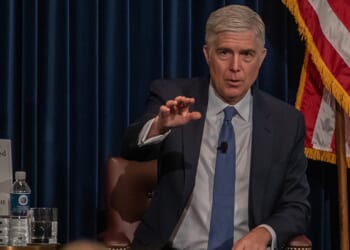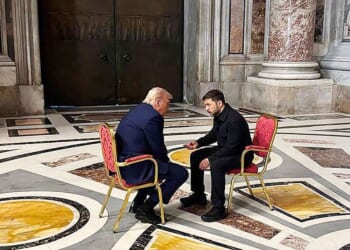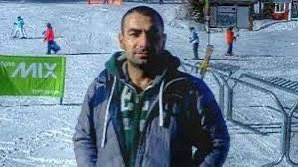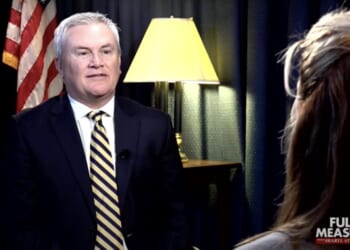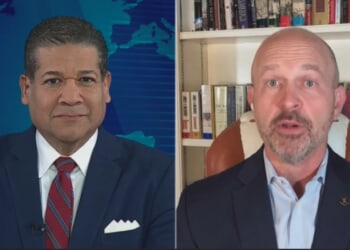The Soviet bomber fleet grew to over 2,000 airframes, starting with piston-engine planes and then evolving to jet-powered craft.
On April 27, 2025, the Cold War Museum in Vint Hill, Virginia hosted a virtual event titled “US Defense During the Cold War.” In the absence of museum founder and chairman emeritus Francis Gary Powers, Jr.—son of the famous U-2 “Dragon Lady” spy plane pilot—who was in Europe conducting a Cold War history tour, the event was hosted by Col. (USAF, ret.) Charles P. “Chuck” Wilson II. Wilson, a member of the museum’s Board of Directors, also flew the U-2 and the SR-71 Blackbird during his flying career.
The guest speaker was John E. Bronson, author of the 2019 book The Cold War Defense of the United States: Strategy, Weapon Systems and Operations. A Cold War veteran, Bronson graduated from Oregon State University and then embarked on a thirty-five-year engineering career working on weapons systems programs which evolved into aviation electronics.
What Did the Event Cover?
“During the Cold War, the US defended against air, submarine, and missile attacks by the Soviet Union. These defenses detected and tracked manned bomber aircraft, hostile submarines, and missiles launched from the other side of the world. The US created deterrence to Soviet attack by means of long-range attacks in response. This session shows how these defenses grew from fledging stop-gap steps into a complex fabric of interconnected combinations of high-tech equipment over 40 years.”
The session additionally discussed the various radar systems and sonar systems employed to detect the Soviet aerial and underwater threats, respectively, along with a concise early history of North American Aerospace Defense Command (NORAD).
Although Bronson’s entire presentation was fascinating and informative, for purposes of brevity this article will focus on the bomber and counter-bomber arsenal segment of the discussion.
The Soviet Bomber Threats
As Bronson noted, before the advent of intercontinental ballistic missiles (ICBMs) and ballistic missile submarines (SSBNs), the first potential Soviet nuclear threat vector that NORAD planned for was fixed-wing heavy bombers. The Soviet bomber fleet grew to over 2,000 airframes during the Cold War, starting with piston-engine planes and then evolving to jet-powered craft. The fleet consisted of planes such as:
During the Q&A session, I asked Bronson about what sort of electronic countermeasures capabilities the Soviet bombers had to jam NORAD radar systems; he replied that he was sure the Soviets had them but didn’t know about specifics.
U.S. Interceptor Counter-Threats
To counter this Soviet bomber threat, American fighters stood on guard ready to intercept them upon the outbreak of World War III. As was the case with the bombers, the American interceptor fleet started off with propeller-driven warbirds (such as the North American F-82/P-82 Twin Mustang, which served from 1946 to 1953) before transitioning to the Jet Age’s technology, including:
Weapons Systems and Tactics
Besides the evolution of the fighter jets themselves, Bronson talked about the evolution of the aerial weapons and associated tactics employed by the fighters, i.e., guns, followed by rockets, and then missiles.
- For gun employment, the tactic was the “trail attack,” which entailed maneuvering to the rear of the target aircraft and firing when within a range of 200 to 800 yards.
- For rockets, that means the 90-degree “beam attack,” which entailed maneuvering the interceptor so that the side of the bomber could provide a bigger target for the radar to lock onto and fire within a range of 1.75 miles.
- For missiles, it depended on whether the missiles were radar-guided or infrared (IR) guided (aka heat-seeking). Radar-guided missiles dictated a “Re-attack,” i.e., maneuvering to a point at the front or side of the target bomber and then firing within a range of 5 miles. IR-guided missiles dictated the “counter turn” to maneuver to the rear of the target and fire within a range of 3 miles.
The specific missile type Bronson mentioned was the AIM-4 Super Falcon; I queried him during the Q&A as to whether the AIM-9 Sidewinder was used for the IR application, and he replied that initially, the AIM-4 was produced in both radar-guided and IR-guided variants.
Bronson’s Parting Thoughts on Deterrence
The concluding slide of Bronson’s presentation stated:
“It worked! America was not attacked. We did not have to attack. Europe has gone without major conflict for 70 years.”
Lest one nitpick that last sentence by bringing up the Ukraine war, that conflict started seventy-six years after the Cold War began and thirty-one years after it ended. Bronson also added these perspectives about the applicability of the lessons of the Cold War to the present state of affairs:
“You know, I haven’t had a chance to follow in detail, but I do suspect we’re once again building up certain kinds of military capabilities, just on the chance that we might need it someday. And so I would think that, to me, one of the greatest lessons about studying the Cold War is that I do believe that deterrence, establishing this capability to damage another country, my own opinion is that that prevented a conflict … We need to be prepared for perhaps the unimaginable, but we still need to be prepared.”
About the Author: Christian D. Orr
Christian D. Orr was previously a Senior Defense Editor for National Security Journal (NSJ) and 19FortyFive. He is a former Air Force Security Forces officer, Federal law enforcement officer, and private military contractor (with assignments worked in Iraq, the United Arab Emirates, Kosovo, Japan, Germany, and the Pentagon). Chris holds a B.A. in International Relations from the University of Southern California (USC) and an M.A. in Intelligence Studies (concentration in Terrorism Studies) from American Military University (AMU). He has also been published in The Daily Torch, The Journal of Intelligence and Cyber Security, and Simple Flying. Last but not least, he is a Companion of the Order of the Naval Order of the United States (NOUS). If you’d like to pick his brain further, you can ofttimes find him at the Old Virginia Tobacco Company (OVTC) lounge in Manassas, Virginia, partaking of fine stogies and good quality human camaraderie.
Image: Sharkovski / Shutterstock.com


